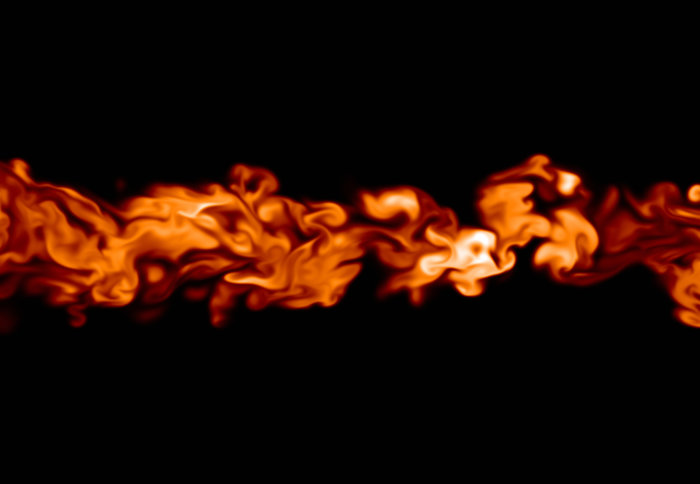Photography Competition Winners Announced

We are delighted to announce the winners of the first ever Department of Civil and Environmental Engineering Photography Competition 2019!
The Photography Competition, initiated by Dr Marc Stettler, intended to show off the varied world of civil and environmental engineering, through eye-catching and inspiring images.
Three prizewinners were selected from almost 100 images and videos submitted to the competition. The competition will be running again in 2020.
"We got a glimpse of how broad the world of civil engineering truly is."

First prize was awarded to Jean-Paul Mollicone, a Research Associate, for his image titled Passive Scalar in a Temporal Jet.
Jean-Paul's image came from his project which involves theoretical analysis and direct numerical simulations (DNS) to study the dynamics of turbulent jets and plumes in a variety of conditions.
His image shows a slice extracted from a 3D flow field using DNS.
Jean-Paul said, "The aim is to gain insights of the multi-scale dynamics by using rigorous and novel tools.
"This allows us to quantify the processes that occur at differenct scales and locations at the interface and in the fluid domain. As a result, new and more accurate modelling techniques can be developed."

Second place was awarded to Undergraduate Student Alissya Rudy for her photograph Field Surveying.
Her image shows a teammate calibrating a total station for detail mapping, during a site trip to Freshwater West in Wales.
Alissya said, "I noticed that the weather was perfect, and though it would be a perfect opportunity for a photo. This photograph summed up the entire trip - being surrounded by beautiful landscape, and working together as a team.
"At the start of the term we had no idea what these machines were, but we got to experience all the new and innovative things that come with surveying, and got a glimpse of how broad the world of civil engineering truly is."
Third prize was awarded to Marcus Rodin, an Undergraduate Student, for his series of images titled Novel Low Carbon Products Made From Sustainable Kelp Composites.
The images were taken using a Scanning Electron Microscope (SEM) of a kelp and sand composite, as part of Marcus's fourth year individual project.
Marcus said, "As one of the fastest growing organisms on the planet, kelp can be farmed to achieve a carbon-negative material.
"This material can be formed to suit the application, ranging from sustainable packing to moulds. They can be dissolved following use, reducing the need to use non-biodegradable plastics."
Article text (excluding photos or graphics) © Imperial College London.
Photos and graphics subject to third party copyright used with permission or © Imperial College London.
Reporter
Melanie Hargreaves
Department of Civil and Environmental Engineering


